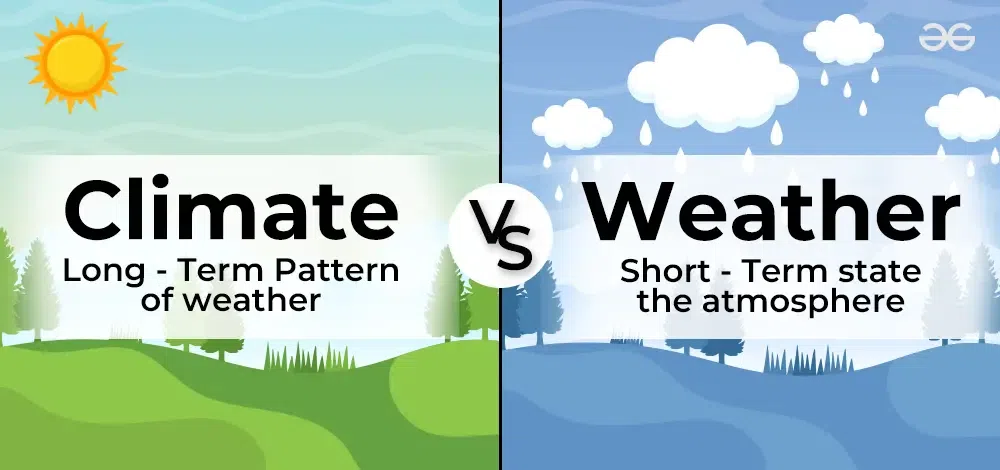Distinction between Weather and Climate:
Weather refers to the short-term atmospheric conditions in a specific area, typically measured over a few hours to a few days. It includes phenomena such as temperature, humidity, precipitation, wind speed, and atmospheric pressure. Weather is highly variable and can change rapidly, for example, a sunny day could suddenly turn into a thunderstorm.
In contrast, climate is the long-term average of weather conditions in a particular region, typically over a period of 30 years or more. It encompasses the overall patterns of temperature, humidity, precipitation, and wind patterns observed over extended periods. Unlike weather, climate represents a broader, stable trend of atmospheric conditions that help characterize a region’s general weather conditions.
Elements Controlling Weather and Climate:
Several factors control both weather and climate, although their influences may vary depending on time scales and the geographical area:
- Solar Radiation: The primary driver of both weather and climate. The sun's energy heats the Earth’s surface, causing air to warm up and rise, which drives weather patterns such as winds and precipitation. The amount of solar radiation received in a region determines its climate, with equatorial areas receiving more direct sunlight year-round compared to polar regions.
- Atmospheric Pressure: The weight of the air affects weather patterns. High-pressure areas are associated with calm, clear weather, while low-pressure systems can lead to storms and precipitation. The distribution of pressure systems also influences long-term climate patterns like the trade winds or jet streams.
- Wind Patterns: Winds, caused by temperature and pressure differences, influence both weather (such as local gusts) and climate (by distributing heat and moisture globally). For example, trade winds help regulate the tropical climate.
- Topography: Mountains, valleys, and other landforms impact both weather and climate. They can cause localized weather patterns such as rain shadows or influence large-scale climate systems by altering wind and moisture flow.
- Ocean Currents: Oceans regulate global climate by distributing heat around the Earth, influencing both coastal weather conditions and overall climatic zones.
- Human Activity: Human-induced changes, such as deforestation or greenhouse gas emissions, are increasingly affecting climate patterns and weather extremes.
Together, these elements govern the nature of weather and climate in various regions across the globe.
Subscribe on YouTube - NotesWorld
For PDF copy of Solved Assignment
Any University Assignment Solution


.webp)